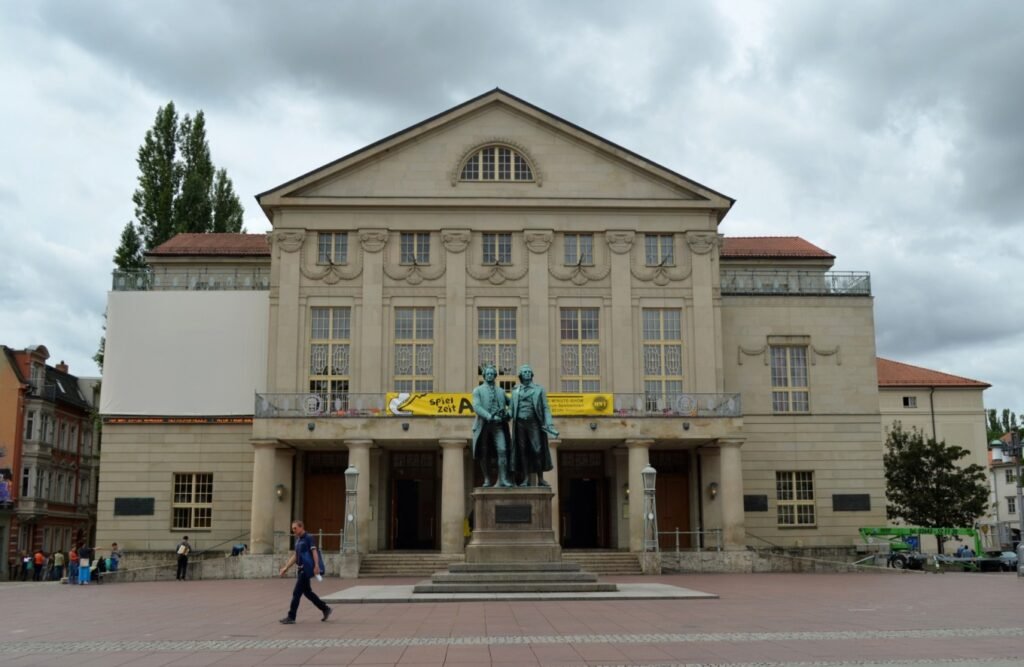The train ride from Leipzig to Weimar is direct and takes about an hour and a half. Although it’s a short trip, it involves crossing state lines—Leipzig is in Saxony, while Weimar is in Thuringia.
To make the most of my visit to Weimar, I set out early from Leipzig and arrived in the town by mid-morning.
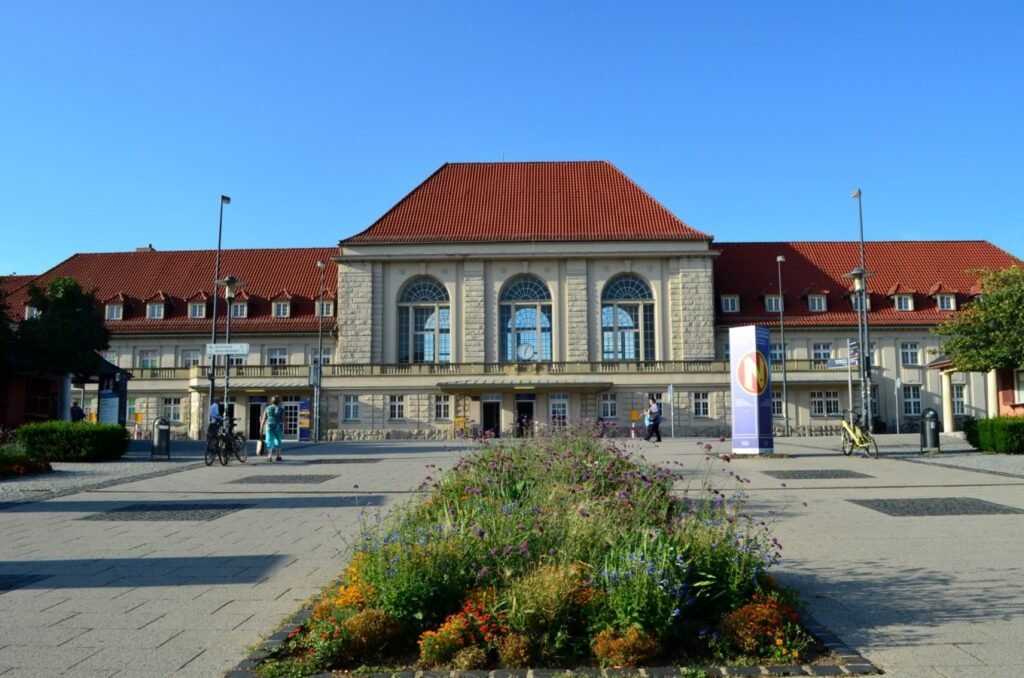
Stepping out of the train station, I was greeted by a clear blue sky and a flowerbed bursting with colorful blooms, making for a beautiful scene. Perhaps it was because it was a weekday morning, but everything felt peaceful and serene. I realized this was probably the most charming train station I had ever seen—there were no throngs of people, no bustling vendors, and certainly none of the homeless or drunk individuals typically found in the main train stations of many larger European cities. As I walked along, my curiosity got the better of me, and I couldn’t help but turn around to snap a photo of the station.
Weimar’s main train station is about a twenty-minute walk from the city center. Just a short distance out of the station, I found myself unable to resist snapping pictures of the buildings along the way, naively thinking this stretch was incredibly beautiful and that I shouldn’t miss the opportunity to document it. As I continued on, I eventually realized by the end of my journey that the entire city was filled with such stunning architecture!
Having lived for a time in Lübeck, a charming northern German town known for its rich history and picturesque scenery, I thought I might be immune to the beauty of any other lovely German town. But upon arriving in Weimar, I quickly discovered that there truly are other exquisite little cities that continue to capture the heart.


In Weimar, no matter which street or corner you stand on, or from which angle you choose to look, the architectural ensemble before you is as beautiful as a painting. This beauty isn’t just a standout or a single highlight; it’s a harmonious beauty that encompasses everything. Even the residential buildings that line the streets, connected one after another, are pleasing to the eye with their color combinations, inviting you to pause and reflect on their charm.
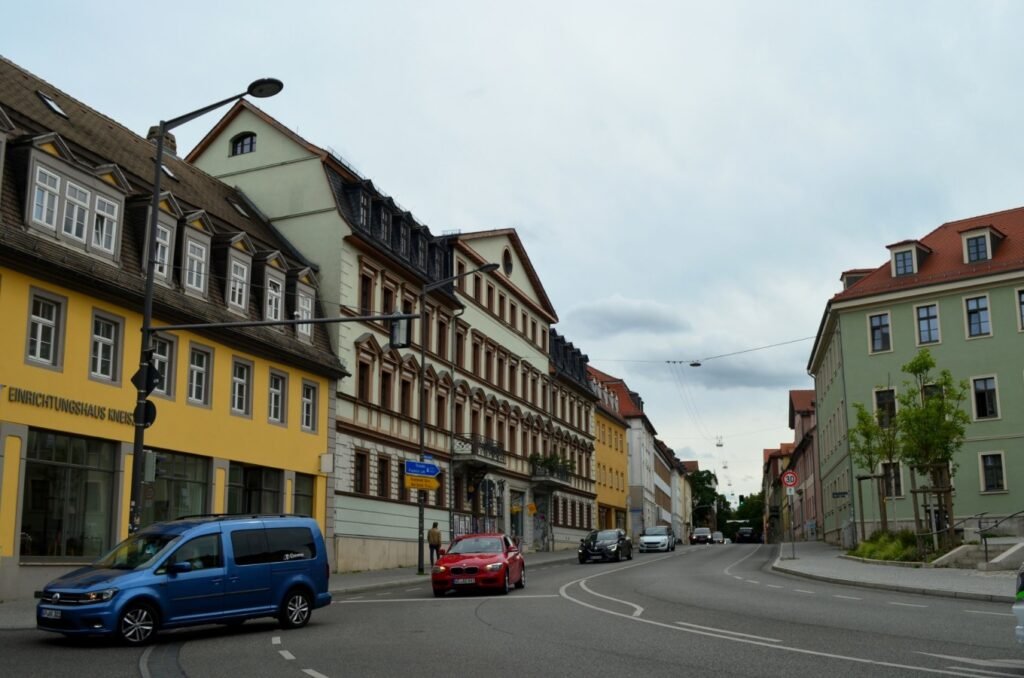
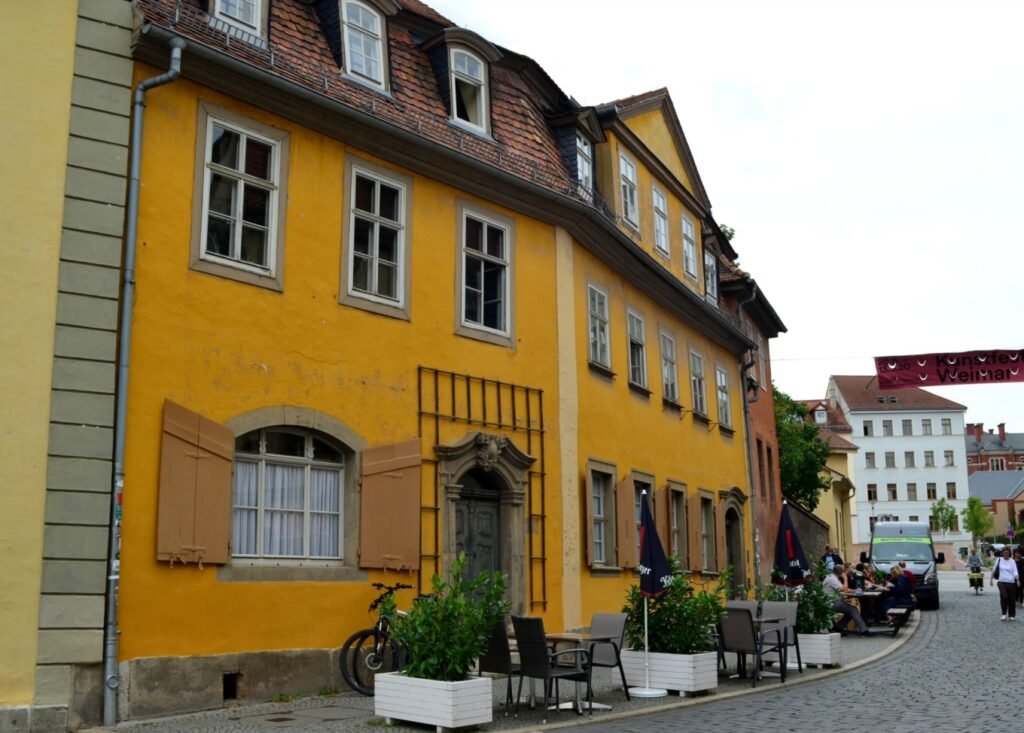
The Home of Bauhaus
When talking about the architectural beauty of Weimar, it’s hard not to think of the Bauhaus University here, which makes the admiration even more understandable.
“Bauhaus” translates to “building house” in German, and the Bauhaus style has become synonymous with modernism. It emphasizes the unity of art and technology, transforming the previously freewheeling nature of art design into something standardized and technical, suitable for mass production. Additionally, it stresses that design should prioritize people over products and highlights the practicality of products. These ideas have positively influenced the development of industrial design, shifting modern design from idealism to realism.
Founded in 1919, the Bauhaus University in Weimar is the birthplace of modern design and the first institution established specifically to advance design education. It remains one of the top design universities in the world, making significant contributions to the fields of art and design globally.
Before coming to Weimar, I knew very little about Bauhaus, so it didn’t pique my interest much, and I hadn’t adequately prepared in terms of time and itinerary. As I leisurely strolled through the small town, every building was beautifully harmonious, yet the surroundings felt particularly captivating. I couldn’t help but take a few photos, and it was only later that I noticed a sign indicating I was actually on the famous Bauhaus University campus. That day, the campus was very quiet, with only a few figures passing by. I wondered if it was due to the school year not having started yet or if the campus was naturally this serene. Hidden in the heart of this exquisite little town is a world-renowned university, profound yet understated, exuding a dedicated academic vibe.
The only regret I had was that I should have set aside half a day to explore the Bauhaus Museum.
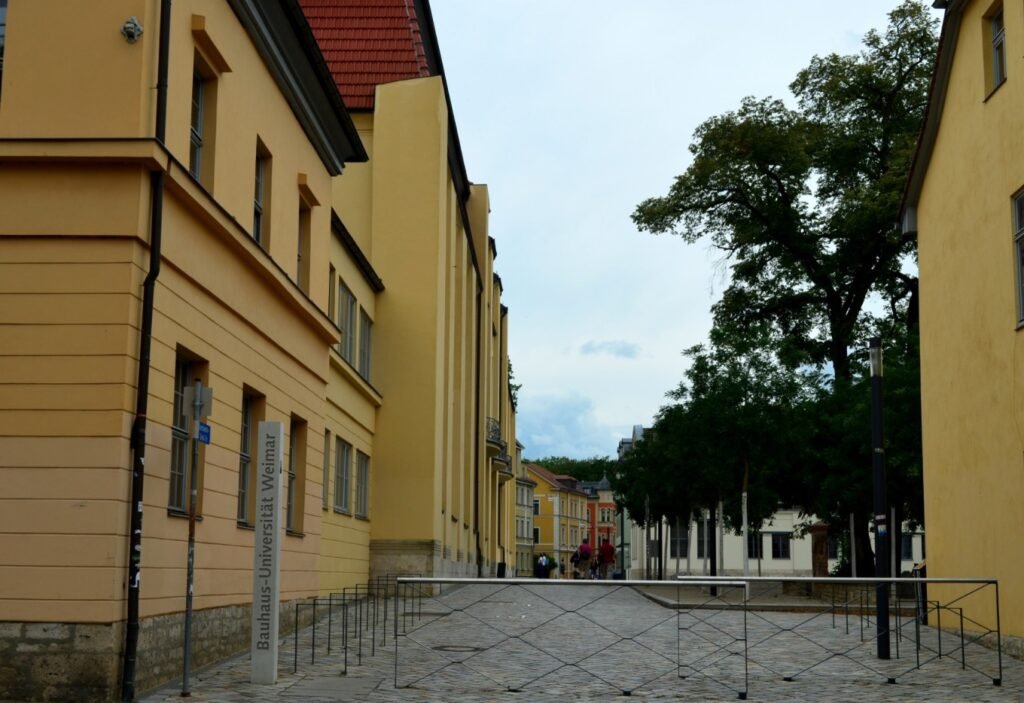
The Artistic Treasures of Weimar
On my way from the train station to the city center, I spotted a very elegant and splendid building. As I got closer, I realized it was the Weimar New Museum.
This museum houses treasures from the classical and modern art periods of Weimar and was the first of its kind to cover such categories during the East German era. Designed by Czech architect in Prague, the building was completed in 1869 and was initially known as the Grand Duke Museum or the Thuringian State Museum. Over the course of more than a century, it underwent numerous changes and suffered damage during wars and the passage of time. The magnificent building reopened in 1999 as the New Museum.
Since April 2019, the museum has featured a permanent exhibition titled “Henry van de Velde and Modernism in the 20th Century.” If you have an interest in this Belgian architect, designer, and painter, you definitely should check it out in person.

Inside the museum, there are some impressive exhibits. For instance, on the first floor, advanced technologies like projections showcase the entire process of how books go from printing to binding and publishing. It’s both engaging and a reminder that this area was once the center of the European publishing industry.
While I regrettably missed visiting the Bauhaus Museum, the New Museum does have some exhibitions on Bauhaus style. After seeing these, I gained a basic understanding of the Bauhaus concept and how it has influenced Germany and the world.
Additionally, a few paintings in the museum left a strong impression on me, such as Henry van de Velde’s Winter Sun. The striking contrast between the crisp winter day and the orange sun is enough to take your breath away. Fortunately, although the museum shop has a limited selection of products, a printed postcard of this artwork was prominently displayed. I bought one without hesitation and framed it. I imagine that on dreary, cold, and tedious winter days in Germany, looking at this painting might bring me a touch of vitality and hope.


The highlight of my trip to Weimar was undoubtedly visiting the homes of famous personalities. Given Weimar’s significant historical and cultural standing, it has attracted numerous renowned writers and artists, such as Goethe, Schiller, and Liszt.
I first made my way to the relatively distant Liszt Museum. Unfortunately, despite its charm, I found it temporarily closed when I arrived. However, the small ivy climbing up the walls outside continued to thrive vigorously, as if nothing had happened.
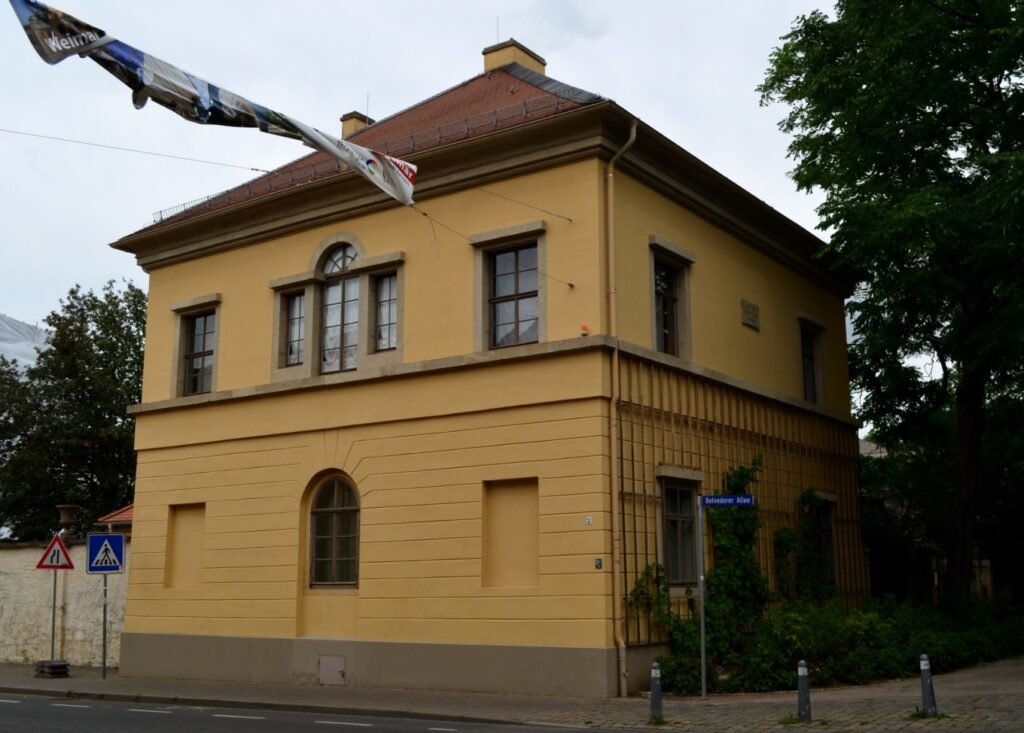

Weimar’s most esteemed resident is undoubtedly Goethe. This renowned literary giant, celebrated in Germany and around the world, spent a significant portion of his life in Weimar.
In the city center, in front of the grand theater, stands a statue of Goethe and Schiller—two prominent writers, thinkers, and poets of 18th-century Germany, standing shoulder to shoulder as they gaze into the distance.
Not only did both Goethe and Schiller reside in Weimar, but they also shared a close friendship. Their mutual admiration and bond as giants of literature have made this small city even more radiant.

Johann Wolfgang von Goethe (August 28, 1749 – March 22, 1832) was born in Frankfurt am Main and is celebrated as a renowned philosopher, writer, and scientist. He is also the most prominent representative of Weimar Classicism and a world-class literary figure.
However, before visiting Goethe’s house, I wasn’t aware that he served as a privy counselor and was tasked with many political duties in the Duchy of Weimar. The spacious house we now visit was a gift from the Grand Duke to Goethe.
I also didn’t know that, aside from his literary achievements, Goethe was an accomplished painter and researcher. His collections came from all over the world, and his explorations and accomplishments spanned various fields of knowledge, including morphology of plants and animals, anatomy, color theory, optics, mineralogy, and geology. I was truly amazed and impressed—he was a rare polymath!
Additionally, Goethe was a sociable person who often hosted various gatherings in the reception room of his home. The spacious and beautiful garden in the backyard was where Goethe and his family enjoyed peaceful, cozy moments together.
It is said that Goethe bid farewell to his remarkable life of 82 years in the small bed shown in the picture below. Yet, his works, theories, and the impact he has had on the world make it hard for people to forget that he passed away over two centuries ago.
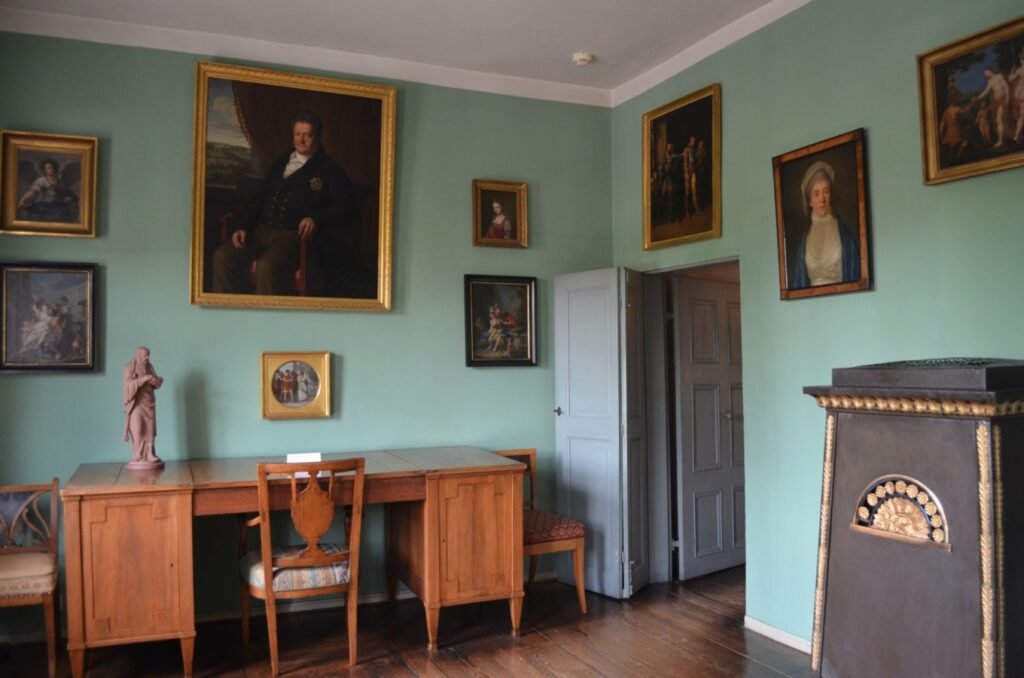
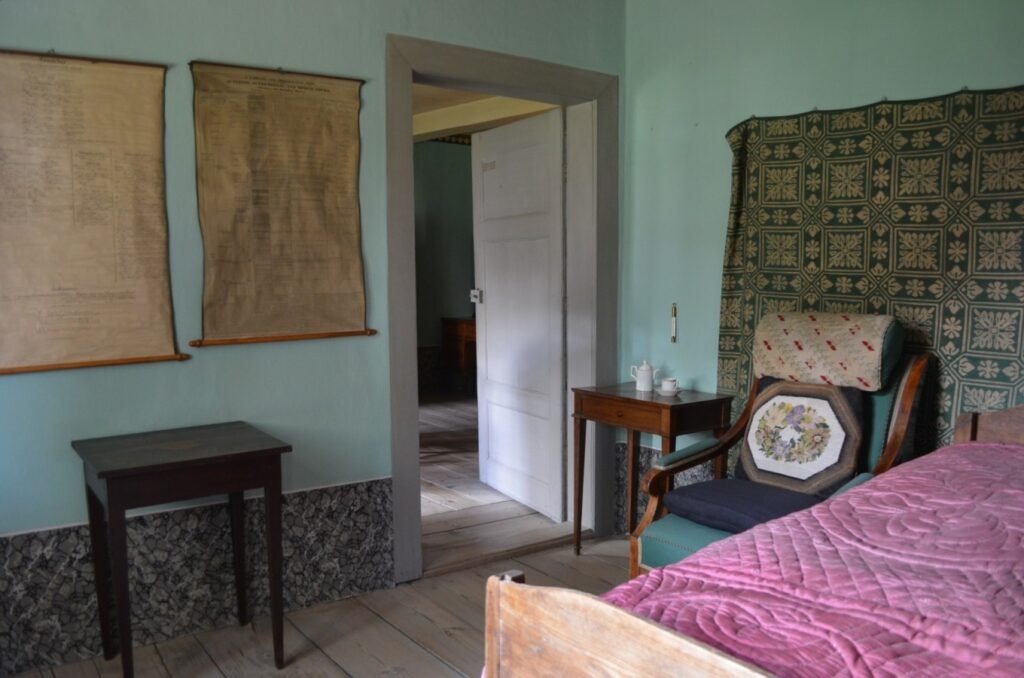
Friedrich Schiller’s house is not far from Goethe’s and is located in the city center.
Johann Christoph Friedrich von Schiller (November 10, 1759 – May 9, 1805) was a renowned German poet, philosopher, historian, and playwright of the 18th century, and one of the representatives of the German Enlightenment literature.
Many people might not be familiar with Schiller, but once you mention that he was the author of the lyrics to “Ode to Joy,” it might ring a bell. Schiller is a prominent figure in the German literary movement known as “Sturm und Drang” (Storm and Stress), and he is recognized as a great writer second only to Goethe in German literature.
Interestingly, Schiller met Goethe after moving to Weimar in 1794, and they quickly became friends. Encouraged by Goethe, Schiller entered a second prolific period of creativity in his life, collaborating with Goethe to produce over a thousand poems and jointly founding a literary magazine and the Weimar Opera House.
Unlike Goethe, however, Schiller did not have the same good fortune. He had to pay for this spacious house himself, which became a financial burden throughout his life. Although Schiller was ten years younger than Goethe, he unfortunately passed away at the age of 45 from tuberculosis, leaving behind a grieving wife and children. Goethe was deeply affected by this loss, expressing, “I have lost Schiller, and with him, half of my life.” After Goethe’s death, in accordance with his wishes, he was buried next to Schiller.
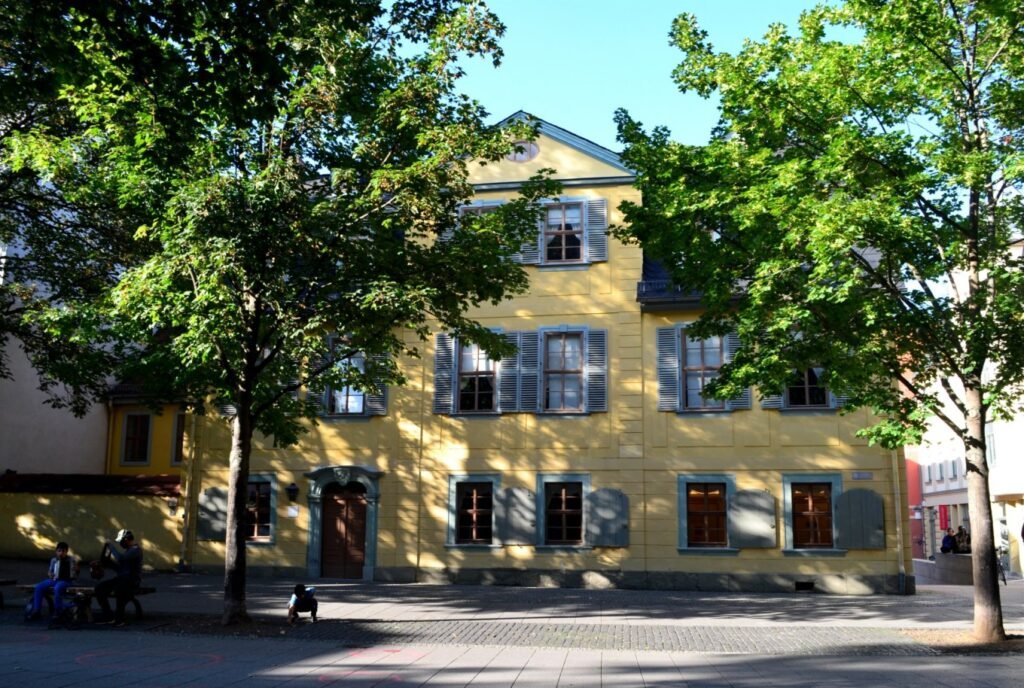

As my day in Weimar drew to a close in the evening, I strolled towards the train station, stepping lightly in the fading sunlight.
While walking, I realized there probably wouldn’t be too many tourists visiting this city. A few German friends mentioned they had come here on school trips when they were younger, although they no longer remembered much about it. There weren’t many varieties of fridge magnets for sale, and the straightforward conversations from the ladies selling food on the street wouldn’t necessarily cater to tourists. Still, I think if one had to choose a city to represent Germany, Weimar could certainly be one of the options—it’s a concentrated essence of a certain side of Germany.
Taking a different route back, I glanced around: the streets in the city center were lined with shops and restaurants, and people were leisurely sipping coffee and chatting in the squares. Occasionally, the sound of clopping hooves and cheerful bells rang out as tourists laughed and enjoyed their rides. The 18th-century classical architecture, the horse-drawn carriages reminiscent of old films, and Schiller’s house just by the roadside made me feel as if I had momentarily traveled back several centuries.
Goodbye, Weimar. You are a quietly luxurious badge, a beautiful crystallization reflecting the essence of German industry, spirit, and art!
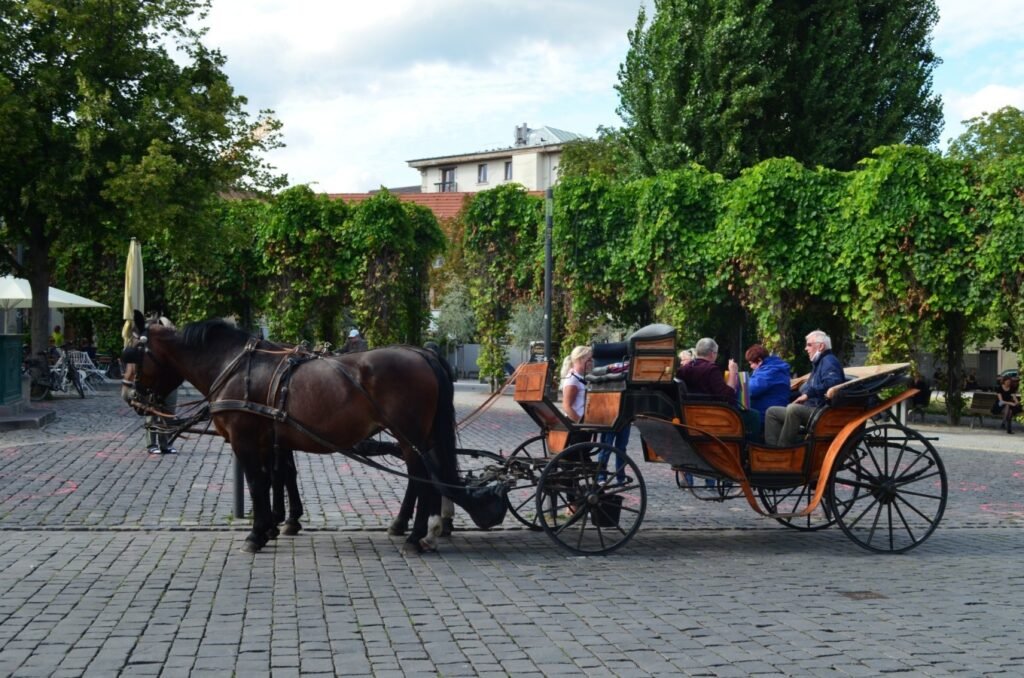
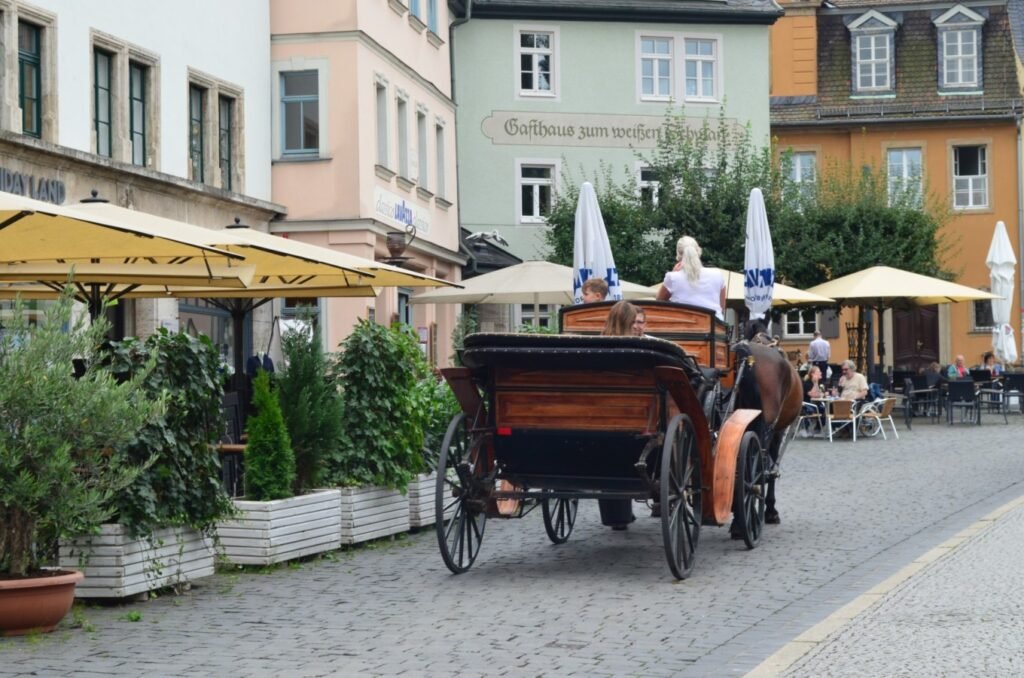
Tips (the following recommendations contain no commercial endorsements):
Weimar New Museum:
Address: Jorge-Semprún-Platz 5, 99423 Weimar
Goethe House:
This location provides detailed maps and audio guides, so with the map featuring pictures of the house, you won’t lose your way.
Address: Goethes Gartenhaus Park an der Ilm, 99425 Weimar
Adult ticket price: €6.50; closed on Mondays (check the official website for specific information).
Schiller House:
Address: Schillerstraße 12, 99423 Weimar
Closed on Mondays (check the official website for specific information).
House of the Weimar Republic:
Address: Haus der Weimarer Republik, Theaterplatz 4, Weimar
Closed on Mondays (check the official website for specific information).

